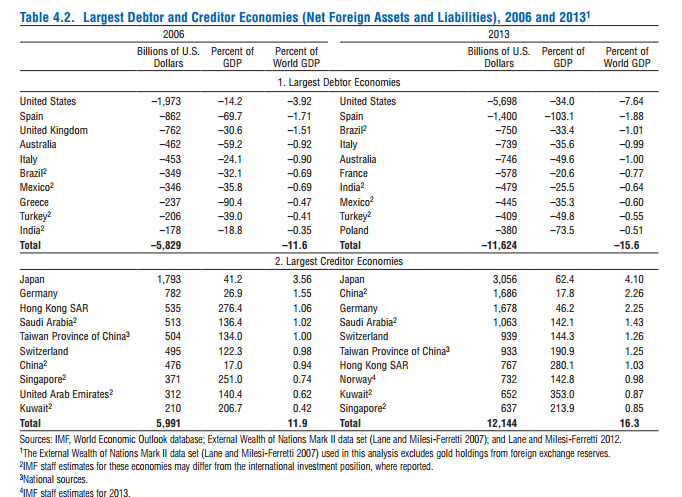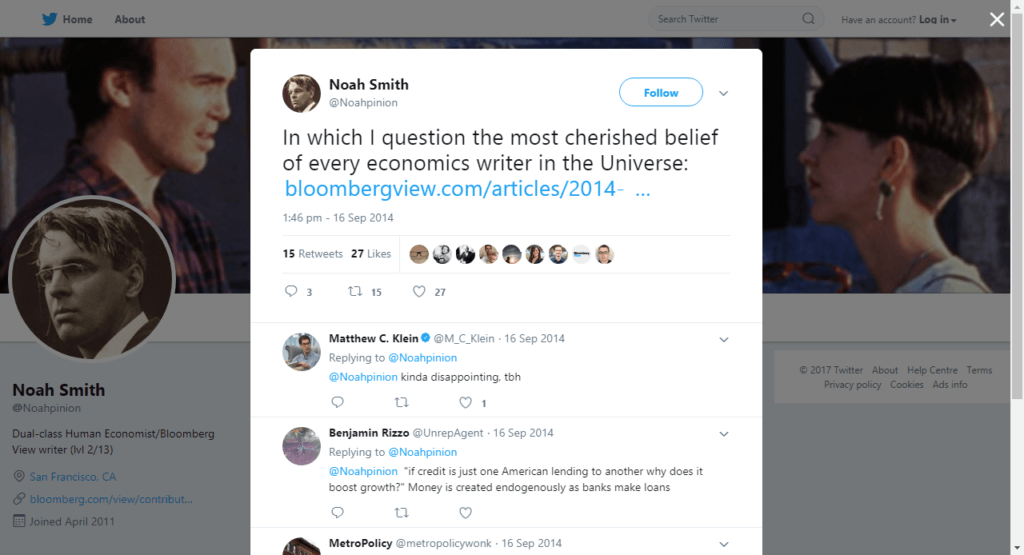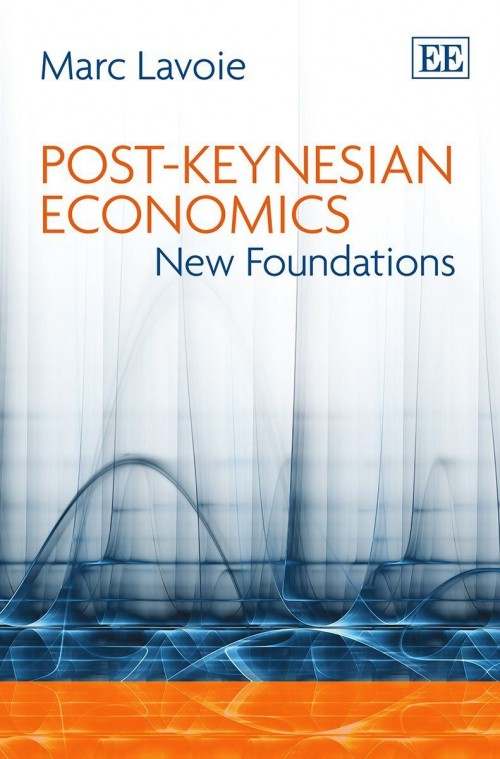In a recent article (from last month), Warren Mosler makes strong claims. He says:
I reject the belief that economy is strong and operating anywhere near full employment. I also reject the belief that a zero-rate policy is inflationary, supports aggregate demand, or weakens the currency, or that higher rates slow the economy and reduce inflation.
…
What I am asserting is that the Fed and the mainstream have it backwards with regard to how interest rates interact with the economy. They have it backwards with regard to both the current health of the economy and inflation, and, therefore, their discussion of appropriate monetary policy is entirely confused and inapplicable.
Furthermore, while I recognize that raising rates supports both aggregate demand and inflation, I am categorically against raising rates for that purpose.
…
The problem with the mainstream credit channel is that it relies on the assumption that lower rates encourage borrowing to spend. At a micro level this seems plausible- people will borrow more to buy houses and cars, and business will borrow more to invest. But it breaks down at the macro level. For every dollar borrowed there is a dollar saved, so any reduction in interest costs for borrowers corresponds to an identical reduction for savers. The only way a rate cut would result in increased borrowing to spend would be if the propensity to spend of borrowers exceeded that of savers. The economy, however, is a large net saver, as government is an equally large net payer of interest on its outstanding debt. Therefore, rate cuts directly reduce government spending and the economy’s private sector’s net interest income.
I don’t understand why as a heteredox author, Mosler simplifies his analysis so much.
This post is not about discussion about whether it is time to raise interest rates in the United States. It’s not the time. It is about Mosler’s claim that monetary policy works opposite to what is usually assumed.
This oversimplification can easily be debunked. If the central bank raises the short term interest rate to say 15% from 0.25%, it will obviously lead to a reduction in borrowing. Firms will reduce investment and stock building as higher rates will require them to pay higher interest and the expectation that the economy will slow down will dampen production. Households may postpone plans for purchases of new houses and take out lesser loans and those with existing loans on floating interest rates are likely to reduce consumption when faced with a higher debt burden because of higher interest payments. Further, raising rates from say 0.25% to 15% may bankrupt a lot of firms because interest payments on debt may become very high. There are also feedback effects: a slowdown of output will lead to higher unemployment and less consumption and so on. It can be argued that interest payment by one economic unit is income for another so one needs a model to see how all this works: complications such as consumption propensities of interest payers and receivers.
Of course this effect may not be so strong if the short term interest rate is raised from 0.25% to say 2% but asserting that there is no effect and that the effect is exactly the opposite is too simplified a claim.
Does that mean that rising short term interest rates is always accompanied by a lower output? No. Monetary policy is only one channel. It is possible that while the central bank is raising interest rates, other things that affect aggregate demand conditions are working to raise output. For example, the government may be raising pure government expenditure while the central bank is raising rates, or exports are rising.
Now reconsider Mosler’s point quoted above:
For every dollar borrowed there is a dollar saved, so any reduction in interest costs for borrowers corresponds to an identical reduction for savers. The only way a rate cut would result in increased borrowing to spend would be if the propensity to spend of borrowers exceeded that of savers.
Not sure what that means. Dollar is not fixed in quantity. Further an economic unit may be both a net borrower and a saver. To see this think of a simple example: Your disposable income is $1mn, your consumption is $200,000 and you borrow $4.2mn to buy a house for $5mn. Your saving is $800,000 and your net borrowing is $4.2mn. You are both a saver and a borrower. Also, I am not sure how “propensity to spend of borrowers” means, as long as one is talking of borrowing to not make purchases of financial assets: all that is borrowed is spent, so this propensity is always equal to 1.
Perhaps Mosler has in mind the debt/income ratio. In the above example, your debt/income has risen but it isn’t necessarily the case with firms as investment is self-financing. Firms may borrow more in response to a fall in interest rates. But this needn’t cause a rise in debt/income as investment is also a source of income for firms as a whole. So firms’ debt/income may actually improve.
Mosler discusses the net lending of the private sector when he is talking of “net saving” (saving less investment expenditure), which is identically the net lending. Even if the private sector as a whole sees a deterioration of their net lending position it isn’t necessarily problematic in the short run. There is no reason that this is a constant relative to output or income which Mosler implicitly is assuming.
Finally the point about interest income on government bonds: it is true that if interest rates are higher, the private sector is receiving more income from the government and this is one factor to consider among all factors which affect aggregate demand. But there is no reason to assume that this effect is always higher.
In stock-flow consistent models, one sees the long run output depend positively on interest rates. But short term, this effect isn’t always positive except in simple pedagogic models.
Mosler gives the example of Japan to show what he says vindicates him. Low rates in Japan hasn’t helped Japan. The analysis is oversimplified because output depends on so many other things than monetary policy. There is no need to make simplistic assertions. Heteredox economists will be be seen as simpletons because of analysis such as that of Mosler. Mosler’s idea of writing was perhaps to stress the importance of fiscal policy and that mainstream economists underplay the positive role of fiscal policy and exaggerate the role of monetary policy. It can be said directly instead of claiming “the mainstream have it backwards with regard to how interest rates interact with the economy.”


